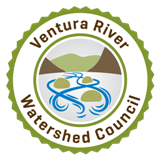Feb. 6 Watershed Council Meeting – One More Review Document
In my email earlier this week I promised one more draft water quality section, Groundwater Quality, for your review in advance of the February 6 Watershed Council meeting. Below are links to that section, along with the latest versions of the other sections and the agenda.
Please note:
1) Because of the schedule, this will be the only Council meeting where we will discuss the characterization of water quality in the plan. This is therefore an important meeting to bring up any issues with regard to the draft characterizations.
2) We are only in the characterization part of the plan, where baseline conditions (e.g., geology, hydrology, climate, demographics, water supply, water quality, etc.) are described. This is not where issues and projects are discussed. The sooner we can get through this part, the sooner we can get to issues and projects.
3) The following preliminary drafts are for content review only. Layout will occur later in the process.
4) These draft versions represent comments integrated to-date, but I have not yet gotten through all the comments yet.
Agenda
Surface Water Quality – Preliminary Draft version 2-3-14
Wastewater Quality – Preliminary Draft version 1-28-14
Drinking Water Quality – Preliminary Draft version 2-3-14
Groundwater Quality – Preliminary Draft version 2-3-14
The Watershed Council meeting is on February 6, 2014, from 9:00 am to 12:00 pm, in the Topping Room of the Foster Library, 651 E. Main Street.
Report on Financing Alternatives for Regional Water Planning
Here is another resource from a different southern California watershed that might be of value here, especially as the Watershed Council’s Leadership Committee works to come up with funding to maintain the Council’s staff after grant funding ends later this year.
The Santa Ana Watershed Project Authority (SAWPA) hired a consultant to prepare a comprehensive report (released in June, 2013) on financing alternatives for public facilities and regional planning. The primary objective of the report was to present feasible and realistic funding alternatives for regional water projects and integrated water infrastructure planning, with an emphasis on new and innovative approaches.
Anyone thinking about crowd source financing? A local bank? The report is worth a look. Thanks to SAWPA for funding the study!
Download the Free “Splatter Spotter” App
and Help Us Map Wildlife Movement & Lack Thereof (Roadkill)
We had planned to include in the “Ecosystem” section of the watershed management plan a map of important wildlife movement corridors in the watershed. This is an issue raised by stakeholders as important to a healthy watershed ecosystem. But, after looking into the available spatial (mapped) data, we don’t have what we need at this time to make a meaningful map on the scale of the watershed.
One of the important pieces of information used by biologists who study this issue is roadkill data. Roadkill data helps identify “hotspots” – locations where roads significantly impede wildlife movement.
Of course, there is an app for that. “Splatter Spotter” is a free iPhone app developed by Dr. Sean Anderson, Assistant Professor of Environmental Science and Resource Management at California State University Channel Islands. The app offers a way to allow citizens to help scientists track where road kill is the most common, allowing them to better design roads and crossing structures to minimize the harm to animals and the hazards to drivers. The app is now in use around the world.
The app lets the user send in information on roadkill sitings, including photos, and the resulting data becomes available as a map.
If you travel the roads in the watershed and would like to help log data for a future wildlife movement map, information on the app is available at www.roadkill.csuci.edu. The website includes detailed instructions on using the app, as well as background information on the issue.
Roadkill sitings (location – as precise as possible, road, date, animal type) can also simply be emailed to Dr. Anderson at roadkill@csuci.edu.
Sitings of living wild animals for which wide-ranging movement across terrestrial habitat is important – such as mountain lions, bears, bobcats and deer – can also be reported using the app by making a note in the “Comments” section that it was a live siting. This is also useful information for identifying movement routes. Past sitings can also be entered.
